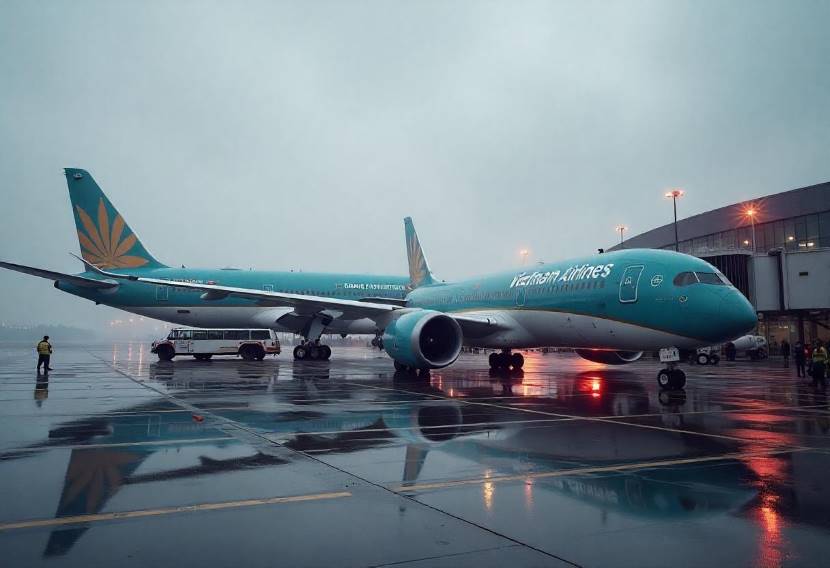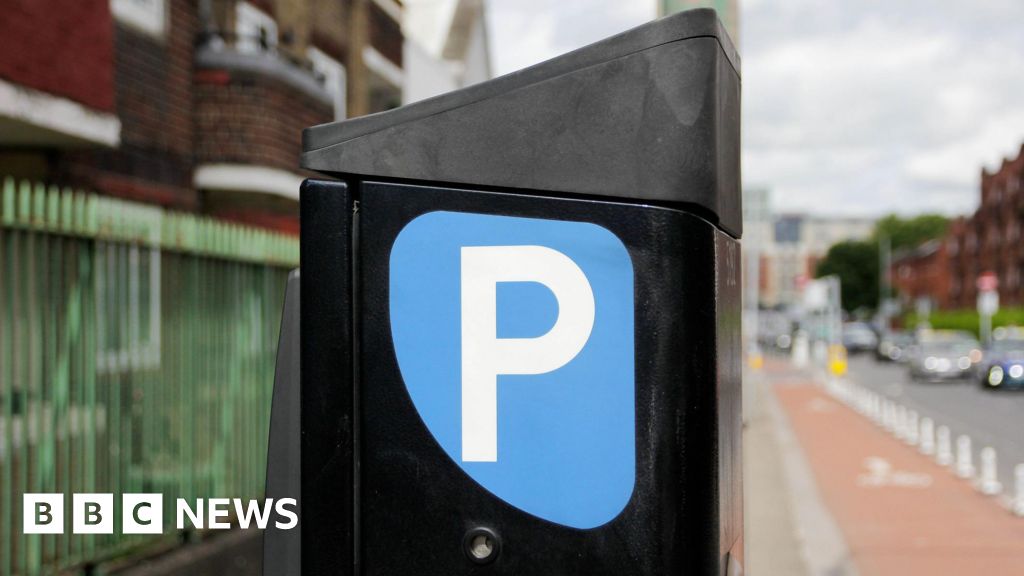Saudi Crew Dies Mid Flight, Plane Diverts to Cairo, New Update You Need To Know - Travel And Tour World
Friday, June 27, 2025

A chilling wave of tragedy has struck the global aviation industry as a Saudi Airlines cabin director dies mid-flight, sending shockwaves far beyond the clouds. It’s a story that begins in the skies yet plunges deep into the heart of every traveler’s fears. Saudi Airlines, a trusted carrier navigating countless skies each day, suddenly faced a crisis that no crew or passenger ever wants to imagine. A cabin director, the leader responsible for calm and order, collapsed mid-flight. The silence that followed was deafening.
Meanwhile, the flight crew knew there was no time to waste. The aircraft was soaring over international airspace when the cabin director’s life slipped away. Every second mattered. Decisions had to be made swiftly. The captain and co-pilot worked in sync to protect everyone onboard while battling the devastating reality unfolding behind the cockpit door.
As a result, an emergency landing became the only option. The aircraft diverted sharply, heading for Cairo. Lights on the instrument panel glowed urgently as the engines hummed, carrying passengers closer to safety. Yet hearts pounded with fear.
However, the emergency landing in Cairo wasn’t just a technical maneuver. It became the stage where Saudi Airlines’ crew transformed chaos into control. Cairo’s runway, usually just a waypoint for global travelers, suddenly held the weight of life, death, and the fragile line in between.
Moreover, this tragedy is sending shockwaves through the global aviation industry. The skies may seem boundless, but news of the cabin director’s death mid-flight has shown how quickly safety, routine, and human life can be shattered. Passengers still reel from the memory. The aviation industry braces for scrutiny. And the world waits for answers. Saudi Airlines, emergency landing, cabin director, mid-flight, Cairo, and the global aviation industry — these words now share a bond forged in tragedy. And the full story is only just beginning.
What began as a routine journey across the skies quickly turned into a haunting tragedy. A Saudi Airlines Boeing 787-10, bound from Jeddah to London Heathrow, found itself thrust into an unimaginable emergency.
At cruising altitude, a medical crisis erupted. The cabin director, Mohsen bin Saeed Al-Zahrani, suffered a fatal heart attack while on duty. The calm hum of the engines gave way to urgent calls over the intercom, transforming the cabin into a space filled with shock and fear.
Passengers stared in stunned silence as crew members rushed to help their colleague. Meanwhile, the captain made a critical decision. He declared a medical emergency and coordinated swiftly with air traffic control. The aircraft changed course, heading for Cairo International Airport, the nearest safe haven.
The Boeing 787-10, registered as HZ-AR32, descended through Egyptian airspace. The crew worked methodically, ensuring passenger safety while dealing with a life-or-death situation in their ranks.
Upon landing, paramedics boarded the aircraft without delay. Despite every effort, they confirmed Al-Zahrani’s death. His body was taken to a local hospital for examination, a solemn reminder that even the skies are not immune to the fragility of human life.
The news spread rapidly, sending ripples through the global aviation community. For Saudi Airlines, the loss is deeply personal. Al-Zahrani was not just a crew member. He was a leader in the cabin, a figure of trust for both passengers and colleagues.
Meanwhile, the airline faced the immediate challenge of managing both public relations and operational continuity. Handling such a crisis requires not only technical precision but compassion and clear communication.
Moreover, the event shines a light on the critical importance of medical preparedness in aviation. While airlines carry emergency medical kits and train crews for basic medical interventions, some situations remain beyond human control.
Despite the chaos, passengers on board the flight remained physically unharmed. Once the necessary legal and medical procedures concluded in Cairo, the aircraft was cleared to continue to London Heathrow. Saudi Airlines ensured that travelers were informed and cared for throughout the ordeal.
However, the emotional impact lingered. A routine flight had turned into a somber reminder of life’s unpredictability. Travelers, eager for their journeys to proceed without disruption, suddenly found themselves witness to a tragedy in the skies.
Beyond the personal tragedy, the incident raises critical questions for the aviation sector. How well are airlines equipped to handle severe medical emergencies mid-flight? Are crew health screening protocols robust enough? What further steps can the industry take to protect both passengers and crew?
Meanwhile, aviation analysts stress that while tragic, in-flight medical deaths remain statistically rare. Airlines worldwide have invested significantly in emergency training, defibrillators, and telemedicine consultations during flights. Yet the incident proves that even advanced technology and preparedness have limits when human health takes a sudden turn.
Saudi Airlines’ response was swift and professional. However, the incident underscores how crucial crisis management has become in the modern airline industry. Passengers today demand transparency, empathy, and swift solutions when emergencies arise.
Moreover, social media amplifies news of such incidents within minutes, adding immense pressure on airlines to respond accurately and humanely. Any mishandling can rapidly spiral into reputational damage, impacting bookings, partnerships, and customer loyalty.
The Middle East remains one of the fastest-growing aviation regions globally. Saudi Arabia, under its Vision 2030 plan, aims to transform itself into a tourism powerhouse, attracting millions of visitors and significantly expanding its aviation capacity.
However, incidents like this challenge the narrative of seamless connectivity and flawless operations. Travelers must trust not only aircraft engineering but also the readiness of airlines to manage the unexpected, whether mechanical failures or human health crises.
Saudi Airlines’ professionalism during the emergency will likely reassure many travelers. Yet the industry as a whole must remain vigilant, learning from each incident to improve future responses.
Travelers worldwide have expressed sympathy for Al-Zahrani’s family and the crew who faced such a traumatic situation mid-flight. Frequent flyers, aviation enthusiasts, and industry professionals shared messages of solidarity, recognizing the immense emotional toll that emergencies like this place on airline staff.
Meanwhile, passengers continue booking flights, demonstrating remarkable resilience. Trust in air travel remains strong, even when rare tragedies occur. Yet behind the scenes, airlines and regulators are likely reviewing protocols to ensure that crews receive not only technical support but emotional care after such distressing events.
As air travel rebounds post-pandemic, the skies are busier than ever. Airlines are racing to meet growing demand, expand routes, and modernize fleets. However, the human element remains at the heart of aviation.
Pilots, flight attendants, and ground staff are the invisible guardians of safety and comfort. Al-Zahrani’s untimely death reminds us that they, too, are vulnerable.
Moreover, it underscores that in the grand machine of global aviation, human life and health remain the ultimate priority. Whether navigating storms or sudden medical crises, airlines must continue investing in training, support systems, and contingency planning.
For Saudi Airlines, the road ahead involves honoring a valued colleague’s memory while ensuring future journeys are safe and smooth. For the aviation world, the incident is a sobering reminder that the skies demand constant vigilance, compassion, and readiness.
Travelers may look up at the roar of a jet engine and think only of destinations and adventures. Yet behind each flight lies a network of professionals prepared to handle the unexpected—even in the face of heartbreak at 36,000 feet.
«Enjoyed this post? Never miss out on future posts by following us»













